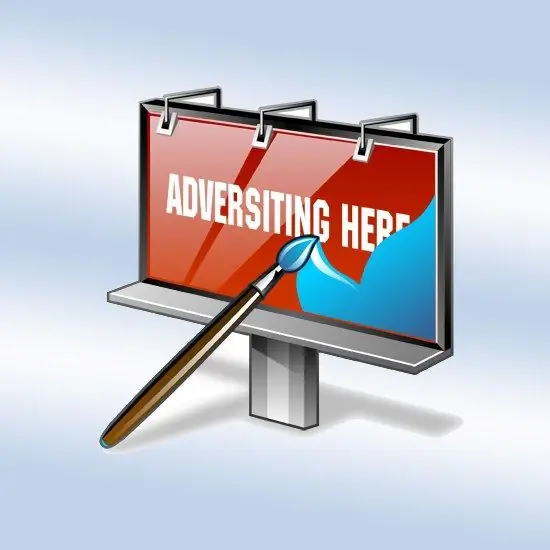The task of creating a poster is rarely confronted by a person who is not professionally engaged in show business, advertising or printing business. You can solve it in several ways, the choice of which depends on the purpose of the poster and your capabilities - you can do it yourself, using the capabilities of computer technology, or you can turn to professionals.

Instructions
Step 1
The easiest, albeit the most expensive, option is to contact an advertising agency. In this case, the entire practical side of creating a poster layout and translating it into paper will fall on professionals. It will be enough for you to explain to the designer how you would like to see the result, and agree with the manager about the material, circulation and price.
Step 2
If one copy is enough, and you know how to draw or copy images by hand, the question of creating a poster will mainly consist in the choice of materials. In the simplest version, it is enough to choose paper of the desired size and use ordinary paints - for example, gouache. If the poster has to hang on the street long enough, you need to take care of protecting it - for example, picking up waterproof paint and paper.
Step 3
Lack of advanced drawing ability can be replaced by the ability to use appropriate computer programs. Most often, the graphics editor Adobe Photoshop or the desktop publishing system Microsoft Office Publisher is used to create graphics of this kind. However, in many cases, you can get by with the Microsoft Office Word word processor. If in versions of Word 2007 and 2010 you open the "File" section in the menu, select the "New" item and click the "Advertising leaflets" category, then in the catalog with the name "Posters" you can pick up a ready-made template. After loading it into a word processor, edit the decals and images as you need.
Step 4
Posters rarely come in a standard A4 sheet format, and more often require larger paper sizes. To print a prepared computer layout, you will need a large-format printer. It can be found in the same advertising agencies or photo salons - there, for a certain fee, they will print a layout saved on some medium (flash drive, cd-disk). However, you can also use a regular printer - most drivers by default divide large images into the required number of standard A4 sheets.






